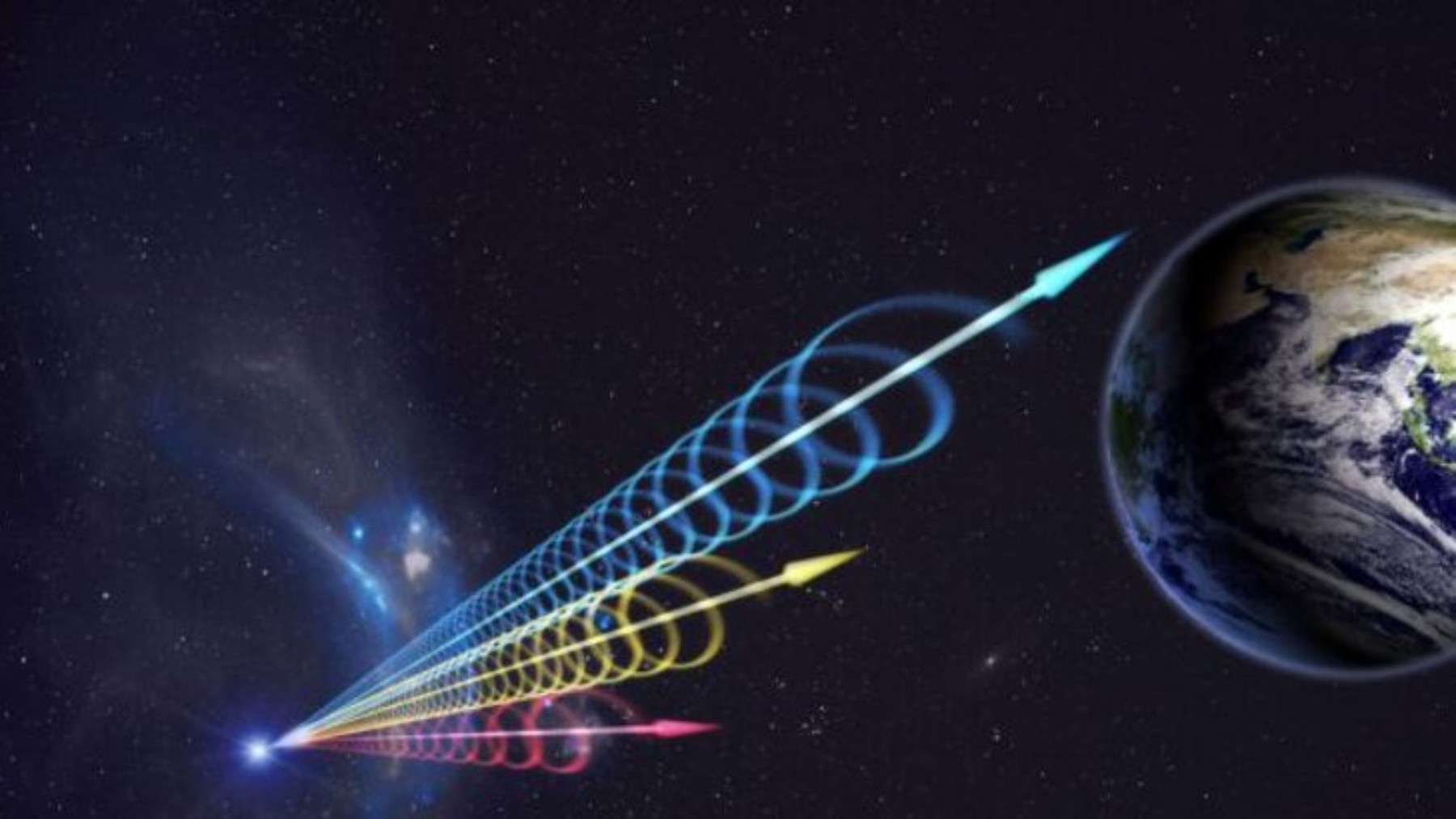With every discovery made about the universe and its behavior, it becomes clearer that we know absolutely nothing about it. Until now, ‘ordinary’ or baryonic matter was associated with stars, galaxies, planets, and interstellar gas. However, it has been determined that there is more matter than we believe. This has been possible due to the arrival of Fast Radio Bursts (FRBs). What are they? They are flashes of light coming from billions of light-years away, lasting only a few milliseconds. Scientists from Caltech and the Harvard-Smithsonian Center for Astrophysics began treating FRBs as cosmic probes.
Thanks to networks like the Deep Synoptic Array-110 in the California desert and observatories around the world, researchers measured the space between galaxies, managing to measure the most distant FRB ever recorded, at 9.1 billion light-years. This has led to new conclusions: what researchers considered missing matter was not hidden, but floating as ionized gas between galaxies, accounting for 76%. Experts have managed to translate that amount of energy into percentages, with 76% being the baryonic matter found in the intergalactic medium (IGM) and 15% in hot gas halos around galaxies.
The ordinary matter referred to is that formed by neutrons, protons, and electrons, having nothing to do with dark energy. This new discovery will help better understand the behavior of galaxies as well as their formation. It is expected that with the new DSA-2000 project by the United States, 10,000 FRBs will be detected per year, facilitating a clear mapping of the ‘cosmic web.’ All of this will be made possible thanks to the union of the James Webb Space Telescope and the FRBs.
Fast Radio Bursts (FRBs)
According to the Institute of Astrophysics of Andalusia, Fast Radio Bursts (FRBs) are bursts of rapid radio radiation lasting from nanoseconds to milliseconds. They are typically found at cosmological distances (in distant galaxies) and may or may not repeat over time, sometimes with periodicity. We still do not know who their progenitors are, although a few years ago there were more possible explanations than the number of known FRBs. In fact, if the entire sky could be observed, about 1,000 FRBs could be detected every day. What change have they produced in the world of astrophysics? According to researchers, upon observing them, they realized that they slowed down at moments, as if they were interacting with something invisible.
New calculations
This gave rise to the investigation that occupies us. Until then, experts had linked ordinary or baryonic matter with stars, galaxies, planets, and interstellar gas. However, it seems they were mistaken. The calculations carried out revealed that there was missing matter, but where is it? After weighing the cosmos and measuring the distance between galaxies, scientists from Caltech and the Harvard-Smithsonian Center for Astrophysics began to treat FRBs as cosmic probes, and they managed to measure the farthest one to date, which came from 9.1 billion light-years away. This was made possible thanks to the use of the Deep Synoptic Array-110 in the California desert, and to observatories around the rest of the planet.
Where is the baryonic matter?
The data obtained on the amount of matter that is floating in the intergalactic medium drew attention: it is not hidden, but in an ionized gaseous state between galaxies. The numbers obtained reflect that 76% of baryonic matter is found in the intergalactic medium (IGM), and 15% in gas halos around galaxies. It is important to remember that the ordinary matter referred to in the study is that formed by neutrons, protons, and electrons, nothing to do with dark energy.
What now?
This new discovery makes it possible for scientists to investigate galaxy formation, supernova explosions, and other phenomena. The US project, the DSA-2000, is expected to detect up to 10,000 FRBs per year, making it easier to map the “cosmic web” with greater precision. It is hoped that the combination of the James Webb telescope and the FRBs will provide much more revealing data and discoveries.





